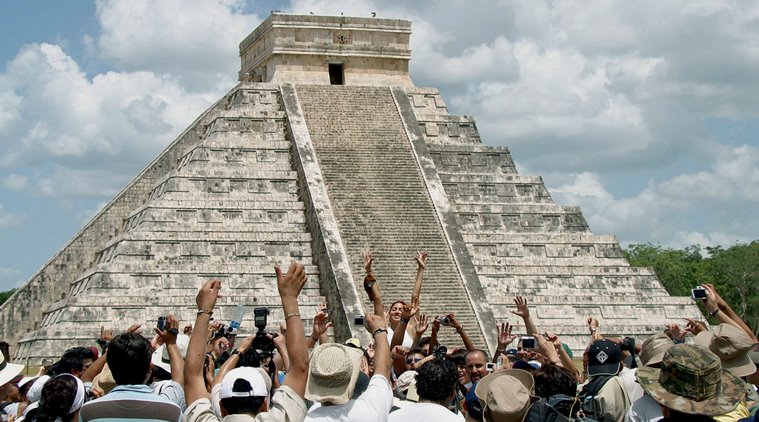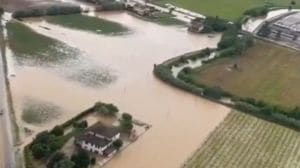- India
- International
Water shortage behind drastic decline of Maya civilisation: Study
Researchers explored the interactions between sociology and hydrology and represented them using mathematical models.
 Villagers and tourists celebrate next to the Kukulkan pyramid at the Mayan ruins of Chichen Itza in Mexico’s Yucatan peninsula (Source: Reuters/file)
Villagers and tourists celebrate next to the Kukulkan pyramid at the Mayan ruins of Chichen Itza in Mexico’s Yucatan peninsula (Source: Reuters/file)
Water reservoirs that served the Mayans well in periods of drought may have made their society more vulnerable during prolonged dry spells and ultimately led to their rapid decline.
Something really drastic must have happened to end the Classic Maya Period in the 9th Century, researchers said.
Within a short period of time, this advanced civilisation in Central America went from flourishing to collapsing – the population dwindling rapidly and monumental stone structures, like the ones built at Yucatan, were no longer being constructed.
Model calculations by researchers at Vienna University of Technology (TU Wien) suggests that irrigation technology that served the Mayans well during periods of drought may have actually made their society more vulnerable to major catastrophes.
The lessons learnt may also help us to draw important conclusions for our own future.

We need to be careful with our natural resources – if technical measures simply deal with the shortage of resources on a superficial level and we do not adjust our own behaviour, society is left vulnerable, researchers said.
“The water supply determines how much food is available, so in turn affects the growth of the population,” said Linda Kuil, a PhD student at TU Wien.
“Conversely, population increases may interfere with the natural water cycle through the construction of reservoirs, for example,” Kuil said.
Researchers explored the interactions between sociology and hydrology and represented them using mathematical models.
“It’s well-known that the Mayans built water reservoirs in preparation for dry spells. With our model, we can now analyse the effects of the Mayans’ water engineering on their society,” Kuil said.
“It is also possible to simulate scenarios with and without water reservoirs and compare the consequences of such decisions,” she said.
Water reservoirs can actually provide substantial relief during short periods of drought. In the simulations without reservoirs the Mayan population declines after a drought, but continues to grow if reservoirs provide extra water.
However, the reservoirs may also make the population more vulnerable during prolonged dry spells. The water management behaviour may remain the same, and the water demand per person does not decrease, but the population continues to grow.
This may then prove fatal if another drought occurs resulting in a decline in population that is more dramatic than without reservoirs.
More Tech
May 18: Latest News
- 01
- 02
- 03
- 04
- 05





























